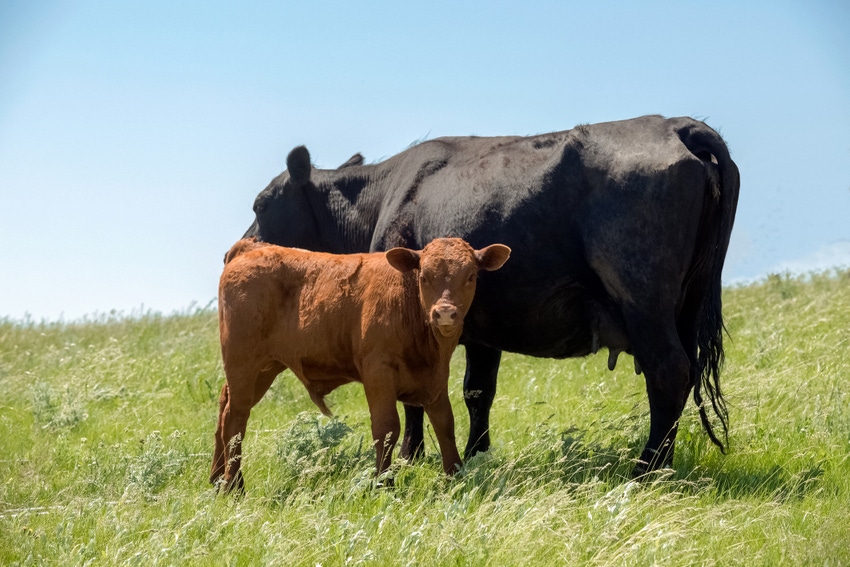First report from "Beef 2017" study describes beef cow/calf management practices.
June 22, 2020

The U.S. Department of Agriculture’s National Animal Health Monitoring System (NAHMS) has released "Beef Cow-calf Management Practices in the United States 2017," the first report from its latest study of the U.S. beef industry.
"Beef 2017" is NAHMS's fourth study of the U.S. cow/calf industry. It was conducted in 24 of the nation’s major cow/calf states and represents 78.9% of U.S. cow/calf operations and 86.6% of U.S. beef cows.
USDA said cow/calf operations were placed in three size categories: small (1-49 cows), medium (50-199 cows) and large (200 or more cows).
USDA provided some highlights from the descriptive report:
Only 7.8% of calves born in 2017 had horns, indicating the widespread use of polled breeds. For horned calves that were dehorned, the average age at dehorning was 107.0 days.
Overall, 77.3% of operations raised commercial cattle (cattle marketed primarily for consumption), 5.9% raised seedstock cattle only (cattle marketed primarily for breeding purposes) and 16.9% raised a combination of commercial and seedstock cattle.
Of heifers bred to calve in 2017, 76.8% were bred only by bulls, and 15.1% were bred by a combination of artificial insemination and bull breeding.
Of cows bred for calving in 2017, 92.9% were bred only by bulls, and 5.5% were bred by a combination of artificial insemination and bull breeding.
Most producers (83.9%) said they were very likely to get information from a private veterinarian in the event of a foot and mouth disease outbreak (or an outbreak of another foreign animal disease) in the U.S. In addition, most producers (93.8%) said they would contact a private veterinarian if they suspected that an animal on their operation had foot and mouth disease (or another foreign animal disease). By knowing who producers will turn to for information during an emergency, USDA said responders are able to target the dissemination routes of information critical to the emergency response effort.
The cow/calf operation was a supplemental source of income on the majority of small (89.0%) and medium (66.6%) operations, while the cow/calf operation was a primary source of income on the majority of large operations (71.9%).
The majority of beef calves (55.6%) were born in February, March or April, with 12.3% of calves born in February, 22.4% born in March and 20.9% born in April.
Among commercial cow/calf operations, a higher percentage of large operations (90.9%) castrated calves before sale than medium (80.5%) and small (55.1%) operations did. Overall, 62.0% of operations castrated calves before sale.
Overall, 42.5% of operations provided calf buyers with information about their calf health program (e.g., vaccinations administered, feed bunk introduction, castration, etc.). By herd size, 35.2% of small, 59.9% of medium and 78.8% of large operations provided calf buyers with information about their calf health program.
The beef cow/calf management report is available on the NAHMS website.
You May Also Like

.png?width=300&auto=webp&quality=80&disable=upscale)

